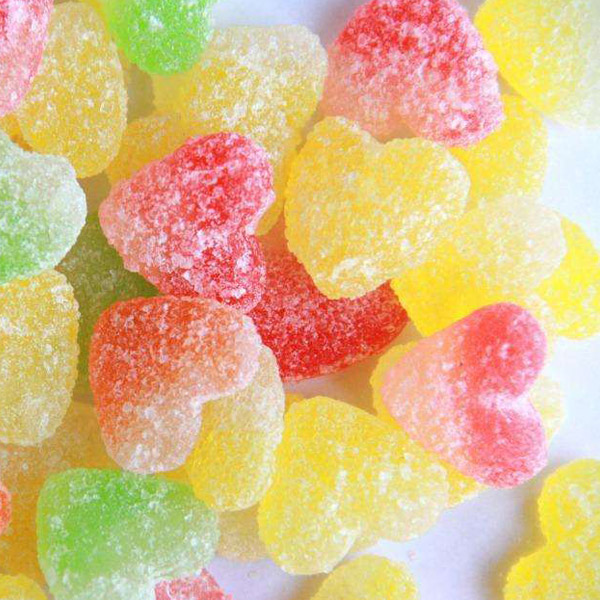Food Grade Gelatin
|
Application |
For gummy bear |
For jelly candy |
For marshmallow |
|
Jelly strength |
250 bloom |
220-250 bloom |
230-250 bloom |
|
Viscosity (customized) |
2.9-3.2mpa.s |
2.8-3.2 mpa.s |
3.2-4.0 mpa.s |
|
transparency |
450mm |
500mm |
500mm |
1. Raw Material: Yasin food gelatin sources for animal skin from Yunnan, Gansu, Mongolia, etc pollution-free grassland
2. Experienced Workers: Most of our workers with rich experience and together with us in gelatin production for more than 15 years
3. Technical Support: Yasin can provide you with technical support if you have any problems in production with our food-grade gelatin
3. Eco-friendly: Invested and updated our wastewater treatment system by around US$ 2 million to maintain a sustainable and Eco-friendly approach
Confectionery
Confections are typically made from a base of sugar, corn syrup, and water. To this base, they are added flavor, color, and texture modifiers. Gelatin is widely used in confections because it foams, gels, or solidifies into a piece that dissolves slowly or melts in the mouth.
Confections such as gummy bears contain a relatively high percentage of gelatins. These candies dissolve more slowly thus lengthening the enjoyment of the candy while smoothing the flavor.
Gelatin is used in whipped confections such as marshmallows where it serves to lower the surface tension of the syrup, stabilize the foam through increased viscosity, set the foam via gelatin, and prevent sugar crystallization.
Gelatin is used in foamed confections at a 2-7% level, depending upon the desired texture. Gummy foams use about 7% of a 200 – 275 Bloom gelatin. Marshmallow producers generally use 2.5% of a 250 Bloom Type A gelatin.
|
|
Function |
Bloom |
Type * |
Viscosity |
Dosage (in cp) |
|
Confectionery |
|||||
|
Gelatin gums |
|
180-260 |
A/B |
low-high |
6 – 10 % |
|
Wine gums (gelatin + starch) |
|
100-180 |
A/B |
low-medium |
2 – 6 % |
|
Chewable sweets (fruit chews, toffees) |
|
100-150 |
A/B |
medium-high |
0.5 – 3 % |
|
Marshmallows (deposited or extruded) |
|
200-260 |
A/B |
medium-high |
2 – 5 % |
|
Nougat |
|
100-150 |
A/B |
medium-high |
0.2 – 1.5 % |
|
Liquorice |
|
120-220 |
A/B |
low-medium |
3 – 8 % |
|
Coating (chewing gum – dragees) |
|
120-150 |
A/B |
medium-high |
0.2 – 1 % |
By acting as a coagulant, gelatin can be used to precipitate impurities during the manufacture of wine, beer, cider, and juices. It has the advantages of unlimited shelf life in its dry form, ease of handling, rapid preparation, and brilliant clarification.
|
|
Function |
Bloom |
Type * |
Viscosity |
Dosage (in cp) |
||||||
|
Wine and Juice fining |
|||||||||||
|
|
|
80-120 |
A/B |
low-medium |
5 –15 g/hl |
||||||
| Psical and Chemical Items | ||
| Jelly Strength | Bloom | 140-300Bloom |
| Viscosity (6.67% 60°C) | mpa.s | 2.5-4.0 |
| Viscosity Breakdown | % | ≤10.0 |
| Moisture | % | ≤14.0 |
| Transparency | mm | ≥450 |
| Transmittance 450nm | % | ≥30 |
| 620nm | % | ≥50 |
| Ash | % | ≤2.0 |
| Sulfur Dioxide | mg/kg | ≤30 |
| Hydrogen Peroxide | mg/kg | ≤10 |
| Water Insoluble | % | ≤0.2 |
| Heavy Mental | mg/kg | ≤1.5 |
| Arsenic | mg/kg | ≤1.0 |
| Chromium | mg/kg | ≤2.0 |
| Microbial Items | ||
| Total Bacteria Count | CFU/g | ≤10000 |
| E.Coli | MPN/g | ≤3.0 |
| Salmonella | Negative | |
Mainly in 25kgs/bag.
1. One polybag inner, two woven bags outer.
2. One Polybag inner, Kraft bag outer.
3. According to the customer’s requirement.
Loading Ability:
1. with pallet: 12Mts for 20ft Container, 24Mts for 40Ft Container
2. without Pallet: 8-15Mesh Gelatin: 17Mts
More than 20Mesh Gelatin: 20 Mts
Keep in a tightly closed container, stored in a cool, dry, ventilated area.
Keep in GMP clean area, well-controlled the relative humidity within 45-65%, and the temperature within 10-20°C. Reasonably adjust the temperature and moisture inside the storeroom by adjusting Ventilation, cooling, and dehumidification facilities.
FAQ
Q1: What are the different types of gelatin?
Gelatin comes in many forms, including gelatin powder or granulated gelatin, with different strengths and bloom values. Different types are suitable for different applications.
Q2. Do your gelatin products come from sustainable sources?
Yes, It is critical to ensure that the gelatin used comes from ethical and sustainable suppliers and that the manufacturing process follows sustainable practices.
Q3: Are your gelatin products free from allergens, additives, or preservatives?
Yes. It is important to verify that gelatin products are free of allergens, additives, or preservatives, especially for individuals with specific dietary restrictions or preferences.
Q4. What is your production capacity, can you accommodate large orders?
1000+ tons production capacity ensures we can handle large orders or meet specific production needs.
Q5: What is your lead time for order fulfillment and shipping?
Yasin can guarantee a fast delivery time of about 10 days.
Professional technical engineer dedicated to guide you
According to your actual needs, choose the most reasonable overall design and planning procedures
